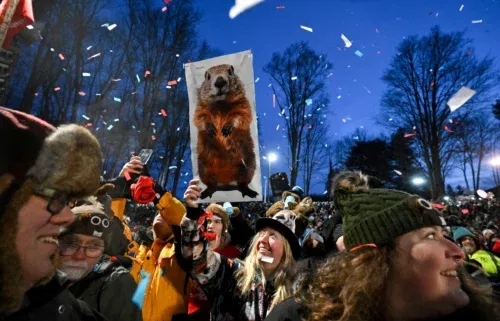The Kansas City Chiefs’ season of extreme temperatures
By Jared Shelton News-Press NOW meteorologist
Ever-present and ever-changing, weather serves as a backdrop for daily life, especially life that happens outdoors.
Depending on the scenario, the weather can be a subtle tone-setter or end up taking center stage. This is a well-known fact in the world of outdoor sports, forcing players to deal with its immutable presence as one of the few variables that can’t be controlled. Some popular American sports such as baseball, golf, tennis and even NASCAR are weather-sensitive, meaning conditions must fall within an acceptable range to go on with a match, game or race. This couldn’t be further from the truth for football, a community of athletes and spectators known for playing and watching games in all sorts of weather conditions.
Fans and players of the Kansas City Chiefs are no strangers to tough game-day weather, annually playing through a range of conditions at the open Arrowhead Stadium, which provides little shelter from the fickle climate of the Central Plains. This season was no exception, with extreme temperatures being the biggest weather-related hurdle, starting with stifling heat.
The Chiefs got an early start acclimating to high temperatures at training camp, held here in St. Joseph. A string of 90-plus-degree days and triple-digit heat indices marked the first week of training camp, as a mid-summer heatwave bore down on Northwest Missouri through the end of July. Aside from a few cooler periods brought on by summer storms and a handful of brief cold fronts, late summer brought several more bouts of high heat.
Kansas City endured 29 days of above-average temperatures and 16 days of 90-degree weather through August and September, not to mention triple-digit heat indices. These conditions may have been tough to train in, but they likely helped prepare the Chiefs for a stifling match-up against the Jacksonville Jaguars in northeast Florida on Sept. 17, where a kick-off temperature of 90 degrees combined with 85% humidity produced a heat index of approximately 108 degrees. By the end of the game, more than 35 spectators were hospitalized due to heat-related illness, yet the Chiefs still came out on top with a win over the Jags.
Several months and several games later, the Chiefs faced another Florida team, this time in brutally cold temperatures as an arctic air mass brought the worst of Midwest winter to Arrowhead Stadium in a match against the Miami Dolphins. A kick-off temperature of -4 degrees combined with icy north winds produced wind-chill values between 25 and 30 degrees below zero, bone-chilling conditions that only grew colder as the game progressed.
Frozen mustaches, beer and toes became almost commonplace in the crowd that night, and in the end, more than a dozen people were hospitalized for frostbite or hypothermia. The bitter cold also was blamed for compromising the helmet of quarterback Patrick Mahomes, cracking it on impact after it grew brittle in the extreme temperatures. Once again the Chiefs pushed through the adverse conditions, pulling out a win over the Dolphins in the coldest game ever played at Arrowhead Stadium and the fourth coldest in NFL history.
Weather will not be a factor in Sunday’s match-up against the 49ers under the domed roof of Allegiant Stadium, but it certainly played a role in the Chiefs’ journey to this year’s Super Bowl.




